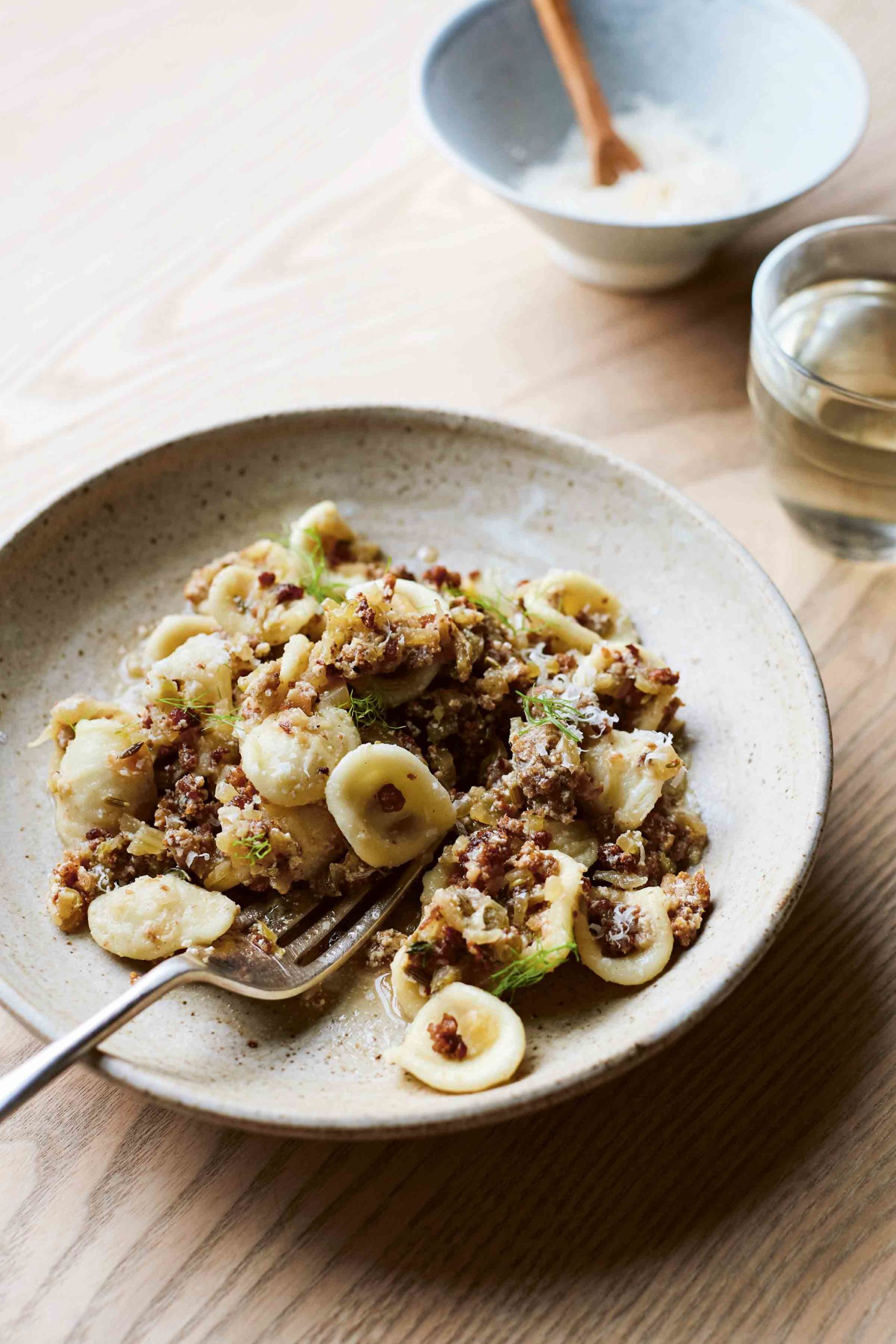
Words by Ed Smith. Photo by Sam Harris.
There’s something undeniably comforting about a rich, slow-cooked pasta dish. For many of us, "spaghetti Bolognese" has been a go-to weeknight meal for years, offering a flexible, family-friendly option where you can throw in whatever's in the pantry and feel satisfied. But, as with anything we make over and over again, sometimes we crave a change.
Lately, I’ve been swapping out that classic beef-tomato combo for something a little different but just as satisfying: orecchiette with pork, fennel, and milk ragù. This dish takes the rustic simplicity of Bolognese and refines it, creating a silky, savory sauce that perfectly coats each little ear of pasta.
What makes this recipe stand out is the balance between the fennel and pork. Fennel has this almost sweet, slightly licorice-like flavor that pairs beautifully with the richness of the pork. When you simmer everything together in milk, it brings a gentle creaminess without feeling too heavy or cheesy. It's more subtle but equally cozy. The addition of thyme, nutmeg, and a splash of dry vermouth or white wine helps cut through the richness, keeping the dish grounded in savory flavors.
Orecchiette is the ideal pasta for this ragù. Its little cup shape catches every bit of the sauce, giving you that perfect pasta-to-sauce ratio in every bite. Whether you’re a seasoned home cook or just looking for something new to try, this dish will quickly become a favorite for cool evenings when you want something warm and satisfying without too much effort.
If this sounds like your kind of cooking, you’ll find this recipe and more in Crave by Ed Smith. It’s packed with delicious ideas for every food mood. Order your copy here.
And don’t forget to subscribe for full access to all our recipes and more insider tips! Sign up now and take your home cooking to the next level.
“Like many, the dish I’ve cooked most in my life is a ‘spaghetti Bolognese’, the catch-all term for a Britalian-ish beef mince and tomato sauce, seasoned with whichever store-cupboard things are to hand, and served on whatever pasta’s in stock.
Increasingly frequently, though, I’ve turned that vague, mid-week mince habit away from beef and tomato, towards a more prescriptive pork and fennel combination, gently simmered in milk until ridiculously satisfying. Whereas I’m ambivalent as to which pasta a ‘spag bol’ sauce goes with, this is very definitely best with orecchiette. Though there’s milk and a dusting of Parmesan at the end, you’ll agree on eating that this satisfyingly beige dish sits in the savory rather than cheesy category.”